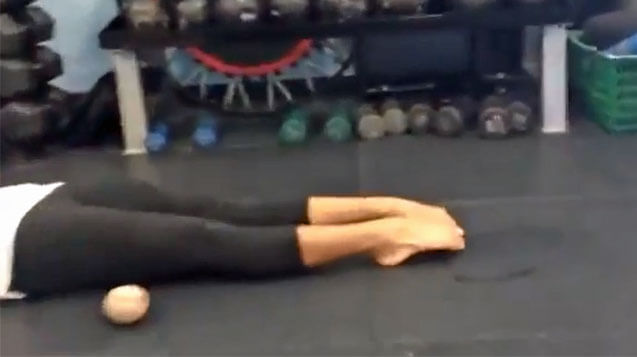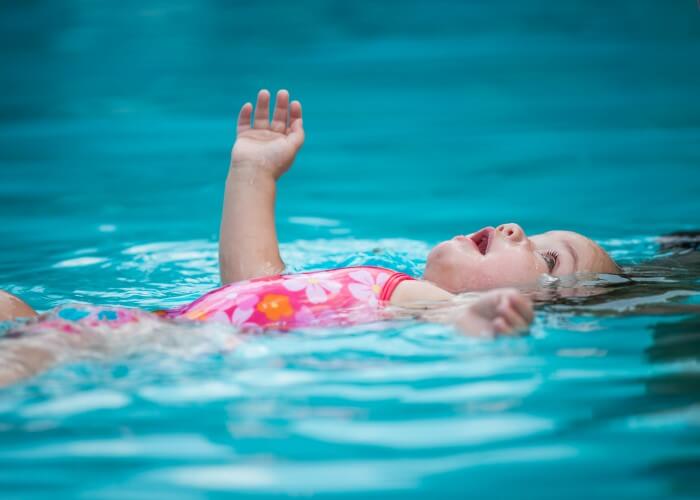15 Weird Swimmer Facts

15 Weird Swimmer Facts
By Dr. G. John Mullen, Swimming World Contributor
Swimmers are fascinating. Not to be biased or anything, but they are. Swimmers have superhuman-like capabilities. They can make their bodies do weird things. And they have some rather strange rituals. These 15 weird facts about swimmers will give you a new appreciation for the sport.
1. Freedivers can hold their breath for more than 10 minutes.
How long can you hold your breath? Go! If you are like most people, you start to feel panicked at about 30 seconds. People in good health and with proper training can hang on for at least 2 minutes. Freedivers take the cake. A freediver can hold his/her breath for as long as 10 minutes. The world record for breath-holding is 22 minutes, which is currently held by Stig Severinsen.
2. The average high school swimmer swims 1 million strokes per season.
Think about that for a minute. You don’t even have the time to count to a million, meanwhile, some swimmer is well on his/her way to swimming a million strokes by the end of the season. Stress and high stroke counts increase the risk for shoulder injury and disability among swimmers.
3. Swimmers can flex their toes to the ground.

Photo Courtesy: SwimmingWorld.TV/G. John Mullen
Foot and ankle flexion is important for swim performance, which means swimmers work hard on increasing the toe-point. Swimmers can sit down with their legs stretched out in front of them and point their toes all the way down to the ground.
4. The odds of swimming in the Olympics are slim to none.
On average 1850 swimmers will make it to the Olympic trials. Of those swimmers, nearly 50 of them will actually make the Olympic swim team.
5. The oldest stroke is the breaststroke.
When you jump in the water, what is the first stroke you do? For many it is the breaststroke, which is possibly the oldest swim stroke there is. Swimming has a history that dates as far back as the 1st century BCE.
6. Swimmers sweat in the pool.
Swimmers lose just as much sweat in the pool as any other athlete loses on land. There is, however, not enough research to tell us how much sweat swimmers actually lose in the water.
7. Most of the nation’s population cannot swim.
A 2014 American Red Cross survey revealed that half of Americans cannot swim. Fifty-five percent of Americans can perform 5 basic swimming skills; 33 percent of African Americans report knowing the 5 core swimming skills; and men are more likely to report they know the 5 basic swimming skills.
8. The world’s youngest internationally competitive swimmer is only 10.

Photo Courtesy: Maria Dobysheva
In 2015, at the age of 10, Alzain Tareq became the world’s youngest competitive swimmer in a World Championships. The Bahrainian girl competed against swimmers who were twice her age. She finished her 50-meter butterfly meet in 41.13 seconds.
9. The world’s oldest swimmer is 100 years old.
In 2015, another world record was set. This one was set by Mieko Nagaoka, who is 90 years older than Tareq, from Japan. Nagaoka is the first centenarian to finish the 1500-meter freestyle swim.
10. Women weren’t allowed to compete in Olympics until 1912.
Swimming became an Olympic sport in 1908, but women were not allowed to participate until 1912. Australian swimmer, Fanny Durack, became the first woman to win a gold medal in the 100-yard freestyle in the same year.
11. Diana Nyad swam from Cuba to Florida.
Then 64-year-old Diana Nyad became the first person ever to swim the 103-mile trek from Cuba to Florida. Nyad had attempted the swim at least six times prior to her record-breaking swim.
12. Some open water swimmers poop in the water.
You know you were wondering about this. Yes, some open swimmers have had to poop during in the water. The actual number of swimmers who defecate in the water is hard to determine because no one wants to admit to dropping a deuce in the water.
13. Shaving isn’t just for removing hair.
Swimmers shave to increase performance. While many believe swimmers shave to reduce drag and to look better in a suit, studies suggest that shaving actually increases the sensitivity of a swimmer’s skin in the water. The hyper-awareness allows swimmers to “feel the water” and its pressure so they can adjust to improve technique.
14. Children can take swim lessons as early as 12 months.

Photo Courtesy: Donnie Ray Jones
Parents begin swim lessons with kids as early as 12 months. In 2009, drowning risks reduced by 88 percent when children between the ages of one and four participated in formal swimming lessons.
15. Swimmers use nearly every muscle in their bodies.
While there are so many people out there to dismiss swimming as a “real sport,” swimming is one of the most intense sports there is. Why? Swimming is an all-body exercise. Yes, swimming uses more muscles than baseball and football.
Swimmers are a weird bunch, but in a really great way. Who can say they knew even half of what is on this list? Better yet, only a few can saw they have actually done anything on this list. What are some of your favorite facts about swimmers?




There are Parent/Baby classes out there that start at 6 months! Our two were both in the water before that with us, but we began classes that early. Thank goodness! Still can’t believe #7 Accidents are never planned.
Fred Dever, people thought I was crazy on #6
Somos una especie distinta…………..por arriba de otra cualesquiera!!!!!!!!!!!!!!!!
Banah-Jena Fakhoury
Sandy Zureik
Regios Igcraa
Julian Garcia Gabriela Barragan
Marissa Hon no.4 and no.8 will surprise u??
Nichole Schultz
As a competitive swimmer i use to swim 100 km a week so in a 25m pool that is 4000 lengths a week and spending 25 hours a week in the water and then at lest 15 hours in a gym to keep the muscles balanced this dose not include the running and biking that i did to get to international level it is the hardest sport i have ever done but far.
Concerning #1 in this article: PLEASE be mindful that prolonged breath-holding is a very dangerous activity that can lead to shallow water blackout, and a silent drowning. If you or someone you know is practicing prolonged underwater breath-holding, please visit our website and learn how to do so SAFELY. http://www.shallowwaterblackoutprevention.org
Comment – warning re breath holding is an important read, thank you! It is risky and can be dangerous!
Sarah Zurn
I want to swim too.
That would be a NO for 11. If Nyad really did swim ‘unassisted’ as she claims it’s a damn shame she didn’t have it properly observed.
I recall the swim being covered on TV. She suffered numerous jellyfish stings.
What? The oldest swimmer is 100 years old??????????????????????????????!!!!!!!!!!!!!!!!!!!!!!!!!!!!!!!!!!!!!!!!!!!!!!! That is super duper crazy!!!!!!!!!!!!
Started my kids in the water at 6 weeks. As soon as I was cleared we were all back in the water. They were swimming before they ever started crawling or walking. I was Red Cross instructor, so it was a common.
Diane Nyah did not swim Cuba to Florida only her and her friends were witnesses. She followed NONE of the open water rules needed for a swim to be confirmed not to mention that she was clocked as fast as a boat for part of her swim. That’s cause that’s where she was, on a boat.
My my – waken up, such inaccurate over generalisations! For instance, not every swimmer can extend their ankles so that their toes reach the ground.
well thats good to know XD
Two swimmers, both Honorees of the International Marathon Swimming Hall of Fame, swam from Cuba to Florida before Diana Nyad’s swim in 2013: Walter Poenisch in 1978 and Susie Marinetti, OAM in 1998. Both swam in shark cages (potentially creating a positive drag), which were common for these types of swims in that era. Diana Nyad did not swim in a shark cage but rather had divers in the water to spot and deter any sharks.
Maroney was the correct spelling
This is insane
this information is the most helpful information that i have used
hey guys its you pal emlo i love swimmi8ng %@&TW(*& pleszsd add meeeeee
I love swimming! i cant belive swimmer sweat.
I am absolutely astound by these facts. they are very life changing. I love when swimmers flex their toes, its so relatable! my son flexes his toes to the ground everday. My son is 45. He also sweats in the pool and it gets very stinky! I love him
Wow! This is good
Did you know a kid learned to swim at 2 months old?
I was a good swimmer at 1 minute old!!!!!!1
CAPPPPP